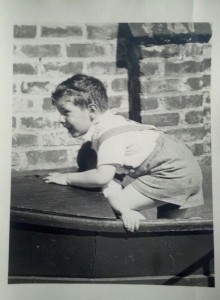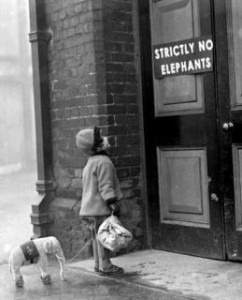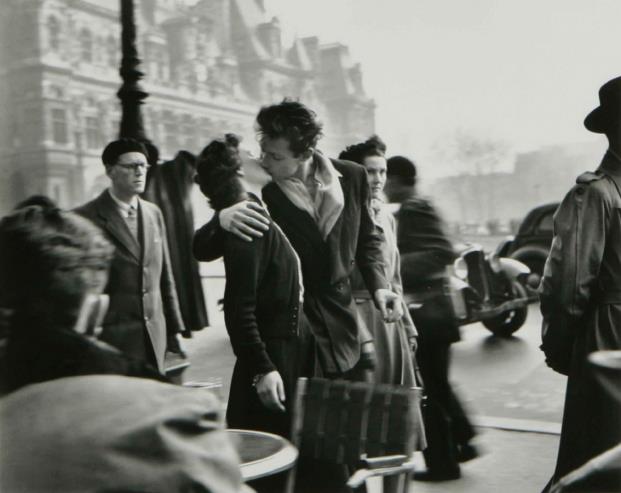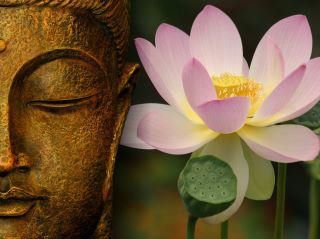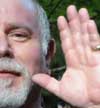The Power of Being Real

Today we are going to learn a new exercise.
One part of the exercise will be used to rewrite the conditioning we have that creates physical guarding in our body, when we feel stress.
Another part of the exercise will be used to rewrite the conditioning that creates walls of avoidance or resistance to our being loved, to us caring about ourselves, or to us wanting the things that matter most to us.
The conditioning that causes us to guard ourselves physically and emotionally, was created to protect us from someone in our past.
People have few negative memories of a parent that was not emotionally mature enough to be unselfish and caring.
It would be very difficult for us to have memories of a parent that was not there with us, caring about us.
When we were very young, we saw everyone as part of us. If one of our parents did not enjoy seeing us and hearing us, or enjoy the responsibility of taking care of us, we did not see them as neglecting us.
As a baby if we were frightened or hurt and our parent did not comfort us, we did not see our parent as someone that was betraying the trust we had in them.
From birth we would cry to be cared for if we needed care. We smiled and laughed so that our parent would smile and laugh back, from infancy.
If our parent did not hold us, enjoy caring for our needs or enjoy spending time with us, we did not perceive our parent as being apathetic to us.
If a parent that did not comfort us when we needed them, got triggered by our crying, emotions, or desire for their attention… got distant and upset pushing us further away, we became frightened of them….and as we felt our parents feelings and energy in us, that feeling and energy conditioned us to fear our own emotions, to fear caring about our own needs and fear love.
When we become triggered now, we feel our parents energy in us and that “feeling of pushing away” is still creating guarding in our body and emotions instead of allowing us to feel safe and relaxed, when we care about something or feel loved.
This triggered energy in our parents was most likely something that happened to them and has been passed down for a while. The feeling or energy is triggered and we freeze like a bunny in a field, that realizes it is in danger moving. This “guarding and fear about caring too much” prevents us from moving forward to have the love of someone that would help us rewrite the feeling we have to not care about ourselves, or feel fear caring about someone else.
 In the first stage of our experience of fear, our brain “freezes us in place” by creating guarding in our body and emotions, our brains resources are all transferred into thought as our brain activates the cingulate gyrus to hyperfocus.
In the first stage of our experience of fear, our brain “freezes us in place” by creating guarding in our body and emotions, our brains resources are all transferred into thought as our brain activates the cingulate gyrus to hyperfocus.
Our “fight or flight” system is the second stage of fear. When our fight or flight system is engaged, it is because our brain has decided it is best not to stay frozen but instead to take control of our life and run or fight for our well being.
We were not able to run or fight as a young child, we had to stay and guard ourselves, so we were numb to our fear, hurt and anger….these very same “frozen feelings” are what we bring up when we are heard and loved now…
The reason we avoid, resist or become angry at someone that hears us, sees us and loves us, is because of the old conditioning of fear of loving someone that loves us and the feelings we never got to “feel” about someone that loved us and betrayed our trust.
Today we are going to move out of being stuck in the first stage of fear and add the “fight or flight” response or second stage of fear, to the folder that creates our physical and emotional guarding, as our new “enlightened response” ….and direct anger towards the person we never got angry at so that we stop guarding and feel comfortable opening our heart again.
Today we are going to get angry at the resistance, avoidance or hostility the person that created our conditioning had for our love. When we direct our anger at the person that created our conditioning, we tag the person that we are angry at and we add the feeling we are powerful and safe from them now, to the folder of our conditioning.
Now the folder that once contained information that gave us a response of guarding, has a “response” that is empowering as well as a perception of ourselves as assertive and capable.
Each time we rewrite something in the folder of our conditioning, it is less likely to be triggered. It does not take long doing the exercises before the old folder does not get triggered or open at all.
I see people that carry the conditioning from their past in their body and life. I feel the tightness, restriction of movement and pain they experience when I treat them.
When we are emotionally stressed we do not breathe deeply. Many people have to consciously focus on breathing deeply, because the guarding in their body does not allow them to naturally breathe deeply, without consciously focusing on breathing and relaxing.
We would “struggle” to float if we were too physically “guarded.” Being guarded tightens the muscles around our chest, shoulders, abdomen and neck, so it is almost impossible to expand our lungs deeply. If we are “guarded” we can’t inhale the amount of air required for us to become buoyant in the water, or to feel present and make others feel comfortable.
The conditioning that creates physical guarding, causes us to struggle with our life all the time.
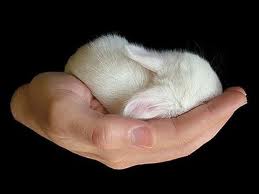 Just as we learn to float one time and from then on, we are capable of floating anywhere….our fear and guarding from past conditioning will be rewritten non-verbally and we will have that comfort as our new way of being.
Just as we learn to float one time and from then on, we are capable of floating anywhere….our fear and guarding from past conditioning will be rewritten non-verbally and we will have that comfort as our new way of being.
 When the software we have from conditioning is triggered, we are in stage one of fear and our brain changes the way it works as well as starting a cascade of other events for our protection.
When the software we have from conditioning is triggered, we are in stage one of fear and our brain changes the way it works as well as starting a cascade of other events for our protection.
The triggered software alarms our autonomic nervous system to prepare for something bad to happen to us and we begin guarding in our muscles and shut down our emotions.
Our brain changes how it processes information when our old conditioning is triggered.
When our cingulate gyrus is activated, our brain looks to find a solution and will look for the cause of the problem until it finds a cause.
Because we are not capable of introspection when we are in stage one or stage two fear, when we are triggered, we do not realize that we are “transferring old fear, resistance and anger that has remained frozen in us” to someone willing to hear our emotions.
When we are triggered, we see our problem as being about someone else, not about us.
As we withdraw from our emotions, we disconnect from our deepest sense of self.
The perception of self-in relationship to others we have, is based a great deal on feeling our emotions and the emotions of others.
For us to feel loved, we have to feel emotions and not guard.
 Today we are going to open the file of conditioning and add more information, that will change much of the file. When the file is open, we are going to reset the conditioning by adding an “informed understanding” which will be a feeling that it is safe to care about our body and emotions.
Today we are going to open the file of conditioning and add more information, that will change much of the file. When the file is open, we are going to reset the conditioning by adding an “informed understanding” which will be a feeling that it is safe to care about our body and emotions.
It is always very helpful to do the beginning exercises described in Empathic Healing Part 4.
Please watch the following short video.
We are “our own parent” now.
To be loving to ourselves and our body, without resistance. To care about what matters most to us and not avoid what matters. To seek comfort and not push it away. To enjoy all of our emotions comfortably. To feel good loving someone that loves us.
EXERCISE PREPARATION:
1) Have the person that created your conditioning in mind when you do the exercise. We are working on the contents of the file that our conditioning is in. Feeling comfortable with emotions we did not feel safe feeling and directing our anger towards the very person that we were afraid to be angry at, is what will allow us to change the conditioned response of “guarding” instead of feeling safe experiencing all of our emotions.
2) Have a plastic bat, something to hit with the plastic bat, a small trash can and Kleenex. We will feel some emotion we resist, avoid or become angry about. We will yell one of the suggested phrases associated with what we avoid feeling and as we yell as loud as possible, we will hit something with the plastic bat between 3 and 5 times.
Suggested phrases:
a) I fucking hate you
b) fuck you
c) you fucking ass hole
d) love me, fucking love me
e) take care of me, care for me
f) hear my feelings asshole
g) pay attention to me, hear and see me
h) be good to me and enjoy it you fucking jerk
i) make up one of your own phrases
3) After the exercise you will want to do something that gives you a feeling of being in your body and enjoying the experience. I suggest bike riding, getting a massage, sitting in a hot tub, doing some exercise or just going for a walk. When you are done bike riding or whatever you choose, please get something good to eat and watch some comedy or listen to some music you enjoy. It is best to have things prepared in advance so that you are able to feel bliss for as long as possible.
THE EXERCISE:
A) Find a place that you generally experience tightness and soreness in a muscle when you experience stress.
B) Push two fingers into the belly of the muscle, continue pushing until taking a full deep breath is difficult to do.
C) Keep trying to breathe and expand your lungs, while you push into the tight muscle.
D) Stop pushing into the muscle. Get the bat. Focus on the person that created your conditioning.and direct your anger towards them. Take a few deep breathes and yell and hit with the plastic bat for 3-5 hits while yelling.
E) Now lie down and completely relax from head to toe while continuing to breathe as slowly and deeply as possible. Do not think but instead feel your body relax as you breathe. Feel the area that was tight relax more and more with each breathe and feel your body lighten each time you exhale..
F) When you are relaxed get up and do whatever you planned, go bike riding or get a massage.
G) Enjoy feeling emotions or all kinds but try to be happy and have fun or sleep until eight hours has passed and the new feeling that it is safe to feel emotions is hardened and lasting in your brain.
SCHEDULE:
Please do this exercise once or twice a week for six weeks.
If you need any help please contact me.
You pushed love down the stairs…
I grew up in San Francisco and when I was a kid, I would walk my wagon up a steep hill by my house and ride it down the middle of the street. I remember flying in the air when my wagon would hit bumps. There were moments I achieved weightlessness. Floating or flying, whatever it was, it was wonderful.
I remember flying far out of my wagon on some bumps. Sometimes I would leave the wagon completely and land on the road.
As children, we all got hurt playing. We got up if we fell down, wiped the dirt out of our hands and kept playing.
I got hurt learning to ride my bike too. I bet you got hurt learning to ride your bike. We get hurt many times growing up but getting hurt playing never changed how we felt about ourselves.
When the people that we trusted to love us, hurt us, it did change the way we felt about ourselves. Most people do not stop playing because they got hurt playing, they stopped playing because they were hurt emotionally.
If we became numb during the time someone hurt us, we may not remember why we stopped playing. Come with me and I will show you how we can find a connection to the playful part of us, once again.
When we are infants, we are unable to take care of ourselves and need our parents to take care of us. We focus on our parent’s emotions and happiness more than our own, because we need them for our care.
Betrayal, trauma or neglect hurt us emotionally, we get upset…and when we experience our emotions of sadness or upset, if our emotions make the person that is hurting our feelings more upset and they hurt us more…it is natural for us to stop having emotions, in order to be less abused… Denying our emotions is how we quickly lose our connection to “self” and soon, we stop playing fearlessly.
Connected to our own feelings about ourselves is where we are strongest.
The feelings of someone we bond with become a part of how we feel about ourselves. It is sad, but becoming numb actually makes the feelings of insecurity we have, hard to experience and understand as not our own feelings but the feelings someone else had that was in my opinion a jerk.
These are feelings someone conditioned us to have about ourselves. We were conditioned to become numb when they got emotionally upset about being hurt by someone. When we were numb, it was easy to condition us to accept their feelings about us, instead of our own.
Each time they lied to us and promised us love and took love instead, we had a dissonance occur in our brain that was created by our caring more about them than they did for us. This dissonance in our brain made us infatuated with the pursuit of their attention and love. This pursuit, of the admiration and attention of someone that does not love us, is the foundation for narcissism. The feelings of insecurity we have from someone that hurt us, is more about them and less about us. Each minute we get back up and fight to get our life and emotions back, the insecurities we have, just like realizing a nightmare was just a bad dream…disappear forever.
We were happy playful kids. We took on the feelings of the person that hurt us and bonded with them because we did not have our own feelings and emotions.
Understanding our insecurities are not about us is important. Our insecurities are like weeds that someone else planted and have nothing to do with us.
The insecurity weeds grow larger each time we listen to someone that tells us to abandon our emotions. Our emotions are the beautiful flowers that grow in our garden, when we care about them.
Re- connecting to our true self is like finding our garden, we have to hear and experience all of our emotions. We were not comfortable having the emotions that created our aliveness but we need to reconnect to them now. When we have compassion for our heart, we open the well that waters the garden and we bloom again.
When we love someone that loves us, we see who we are. We stop being worried about what others think and we enjoy what we are doing.
Narcissists are everywhere now, it is important for our ability to re-connect with our self, that we avoid them.
Humans are not able to be introspective without emotions. As a narcissist, a person is not able to realize they do not have much empathy for others they want in their lives.
Narcissists can speak of love and tell you they love you. Narcissists have dramatic swings of feelings about themselves because “feeling admired” is far from connecting to the real child/person within.
If we bond with a narcissist and we become numb, we risk losing the ability to connect to our emotions and become our authentic selves.
(Here is where we push love down the stairs…)
I was emotionally hurt a long time ago and because of that I began studying A Course in Miracles and Neuro Linguistic Programming. After doing N.L.P. for a while, I became a narcissist. It was great not to feel sad but I did not notice I was not feeling many emotions at all.
I did a lot of work to feel my emotions again and I am proud to say I understand how much better life is feeling all my emotions. I am no longer a narcissist and would be glad to help anyone that wants help re-connecting to their authentic self.
Yesterday on a new age radio network, I was listening to a very popular author. She was taking calls from listeners and helping them with the problems they had.
The woman that called in wanted to know, “Why do I keep chasing after people that hurt me?”
The author told the person, “You need to stop caring so much about people in your life and become selfish. You deserve to be happy.”
We do not need to become selfish, or narcissists to be happy.
When we are whole and connected to our emotions, we are able to be happy and love others.
I am sad to hear so many people telling others to do something that would only bring symptomatic relief and then bring the caller back needing more.
To remove the cause of a problem, I would ask more questions of the caller. If I understood more, I could empower the caller to remove the cause of their problems themselves.
There are maps that allow people to return to the connection they once had with themselves. Each map is unique because our path is our life. It is wonderful to show someone how he or she can create a wonderful re-bonding experience himself or herself.
It is only through love that we can heal our broken heart.
In loving our children, we see our own beauty. The person that runs into our arms with love is the mirror we want to have.
The love we have for the person that loves us, will allow us to see how much we are like the person we love and we will bond to the feeling they have about us.
When we have bonding experiences with souls that reflect how lovable and wanted we are, we will once again play with abandon.
Narcissist The Exercise for Healing
Video “Part One”will help us understand how a narcissist persona began and how it changes us.
Video “Part Two” is the exercise for healing ourselves. When we open our heart, have a way to automatically love ourselves the way others do and become real as a result…we can see our beauty with a new clarity and the beauty of others as well.
I love you.
Photo @ by Zack Milstein
Video Part One
Video Part Two
Emotions Add Color to the World
 After asking people for many years when they first started using self-help, I realized that most people started using self help after being hurt emotionally.
After asking people for many years when they first started using self-help, I realized that most people started using self help after being hurt emotionally.
From my own experience, the first time I used self help was to numb my emotions.
When I was doing self help a long time ago I saw that many used self help to have a cool image as well.
There are so many people concerned with image that I declare “Style to have officially won over substance.” Someone cool seems preferable to a warm heart.
The emotional work I have done the last 20 years, is very different from other types of self help. My work is about allowing people to open their heart and experience all of their emotions so they can be themselves and grow.
Is love something we hold as sacred? Is love an idea or a feeling in our heart? Is just loving anyone special for us or is loving someone that loves us in return, that is sacred to us? Do we experience the joy of love for someone even when we are not with them and does this shape our being?
When we open our heart to another, we feel how they genuinely feel about us. If the person we love becomes numb, we no longer have our playmate to have fun with. It is easy to close our heart and hard to open it again.
If we hold love sacred, we must be able to experience the emotion of real love.
If we are not helping people open their hearts, how are we helping the world?
Self help is commonly used to mask emotional pain. This way of dealing with emotions only brings symptomatic relief.
Self help should make us more capable of experiencing all of our feelings, perceptions, reactions and emotions so we can find what the cause of our problems is. We need to learn to love ourselves. Love is an emotion.
We can not stop just a few emotions, we stop all emotions including the experience of love when we try to stop feeling any emotions.
I find people are less interested in removing the real cause of their problems, when they have symptomatic relief. Some of the same techniques that are used to make people stop feeling emotions that are used in mind control, are commonly used in self help. These only assist people in disconnecting from their lives.
To be our authentic selves and use our entire brain, we need to feel emotions. Emotions are essential to being who we are. We understand others through their emotions, as they understand us through our emotions or numbness as well.
Most of us experience more of what is important for our growth while we are feeling love than at any other time. Love gives us the incentive to grow.
People that have stopped feeling because they have been hurt, experience the addition of depth and color when they are able to feel emotions again.
Step 3- Emotions Add Color to the World, is about us allowing ourselves to have all of our emotions and be comfortable and not afraid of them.
We do not go back to the past to dredge up emotions. We try to become comfortable feeling any emotions we have not allowed ourselves to feel.
The more we allow ourselves to feel comfortable and safe with the emotions we have, the less fear we have of feeling emotions. People that feel their sadness or hurt in a gentle and compassionate way are able to feel love again because they are not too afraid of pain to open their heart.
In group 3 we do not discuss personal information. We do allow people to have the emotions or feelings that seem to them to be too much for them to experience alone. We give support and love to those brave enough to experience the fear and emotion that has stopped them from having the love we all want to enjoy.
Step Two Seeing the Beauty of Our Soul
How do we grow as a person so that we can experience our beauty reflected in the world we see? One of the important steps in the process is to develop an appreciation for the beauty of our soul.
When we are able to experience the beauty our soul has, we are able to open our heart much more. As we open our heart we turn up the volume on all of our senses and experience much more.
“How” we see ourselves is important for our growth. In particle physics, you may have learned that “how” we observe an object changes it. If we are only able to see light in the form of a particle, light will become a particle. When we are only able to see light in the form of a wave, light will become a wave.
How we observe something in particle physics changes it. “How” we observe ourselves changes us as well.
If we put on a new outfit, we feel wonderful. When we feel wonderful, we experience ourselves in a way that allows us to be more ourselves. Who we are when we are more ourselves, allows us to create experiences we would not have, if we were not feeling whole.
What creates the way we “see” ourselves? Our brain works as a unit for many tasks but not all tasks. Some areas of our brain have specific duties. One area of our brain adjusts our pupil size and another area has the ability to analyze information the information our eye receives about the spectrum of light. This area of our brain adds the value of color to an object.
Another area of our brain adds the emotional value others have for us. “How” we see ourselves, is an emotional value we place on ourselves. “How” we see ourselves may be different in each relationship we have. How we see ourselves also changes the outcome of each relationship we have.
Our brain is primarily a social tool for us to interact with others. The part of our brain that ascribes the value or meaning of the facial expressions of others, does this for us instantly. In the same instant, the same area of our brain will change how we feel in relationship to someone’s facial expressions. We also understand what we may expect as an outcome of this relationship in the same way.
We learned “how” to feel about ourselves from our early experiences. The part of our brain that “sees” us, does not understand language.
Step number 2 is about seeing the beauty of our soul. We will be doing exercises that allow us to rewrite the conditioned way we see ourselves in various relationships. The exercises give us an experience that allows us to see the beauty of our soul reflected in the eyes of everyone we have a relationship with.
We learn to dance, float or ride a bike and have a new experience of ourselves that allows us to see ourselves differently. “How” we now see ourselves has been enhanced because of a new experience of ourselves. The way we get updates in our brain so we can see ourselves in a new way is not from words or ideas but from a new experience of our self.
How does seeing our self in an enhanced way improve our life in an objective way? When we are interviewed for a job, our job is to move a person’s feelings about us towards our goal of offering us the job. If how we see ourselves is as a wonderful person, the person interviewing us will instantly understand how we feel. If we do not feel comfortable, the person interviewing us will understand this too, without us saying a word.
If we ran out onto a stage because we were late and the audience lights were on so we could see the audience, we would look into the eyes of the audience and see them as judgmental. How we felt about ourselves (anxious) would be added to the value or meaning of what we felt was behind the eyes looking at us.
If we feel wonderful, relaxed and lovable before we went onstage, we would see the audience love us. Conditioning is the “preparation” added before we do something. The feeling we have inside us about ourselves is what we see in the eyes of others.
If we have a good objective experience of ourselves a few times, each experience will validate a new and enhanced automatic way of seeing ourselves. Just as when we learn to dance, we can have an experience of ourselves in any social situation or relationship that will allow us to be more comfortable and whole.
Seeing love in someone’s eyes now becomes what we prepare for automatically each time we see them or when we go onstage. We now have a new conditioned response and a new outcome because of it.
If we saw ourselves as unlovable or someone that had to accept mistreatment, we might have lived out a story similar to a tragedy. When we appreciate who we are and respect the beauty of our soul, we give ourselves the ability to rewrite our story and create the life we want.
Seeing the beauty of our soul is what this lesson and group is about. The 2nd group gives us the support of having a new experience of ourselves in any relationship we want to improve. The experience allows us to see the beauty of our soul in others eyes.
As we learn to appreciate the beauty of our soul, we develop the ability to also see beauty in the souls of others. When we see the beauty of a person’s soul it is wonderful to see how much they enjoy showing us all of the beauty they have. As we open our heart and connect to others in this way, we create an enhanced experience.
The Seven Step Program
The 7 step program:
1) It’s my life
2) My soul is beautiful
3) Emotions add color to the world
4) Teaching my brain to reward me
5) Creating feelings in others
6) Opening my heart to create what I want
7) Relationships
Each step and peer support group will enhance our experience of life.
Step 1 – “It’s my life”
A person entering the group accepts that they are now “their own parent” and have the responsibility of giving themselves the love and happiness, they always wanted to have.
We take responsibility for hearing and seeing who we are. This means that we honor our feelings.When we cry inside, we hear it and do something about it. When we are our own parent and hear our inner child, we feel heard. When we listen we become more alive.
When we laugh and are happy, we reward ourselves by being proud we were good to our inner child. In this way we feel seen for who we are. We become more confident and whole each time we reward what makes us happy.
By being there all the time for our inner child, we re-pattern our early bonding experience. Because of this we have an enhanced experience of ourselves in the world.
As we feel ourselves as a caring and loving parent that is always there, we develop object permanence. Object permanence is the grounded feeling people want. We feel safe, at home and wanted no matter where we are.
The group allows members to talk about the new relationship they have with themselves and how they are parenting their inner child. We support each other as loving and compassionate parents that are learning more all the time.
This first step in opening our heart, is wonderful when we have support for the work we do.
Confident IV the first exercise
 In a previous blog titled “Who Am I” I said, “The good news is we can change anything we want and become who we want, without having to go into the past. Because our brain is designed to grow and be whole, what we do in the present is the best vehicle for developing and enhancing our brain.”
In a previous blog titled “Who Am I” I said, “The good news is we can change anything we want and become who we want, without having to go into the past. Because our brain is designed to grow and be whole, what we do in the present is the best vehicle for developing and enhancing our brain.”
Today we are going to learn a beginning exercise that will help us to be the confident, present and compassionate person we hope to be. This exercise will also give us the ability to start changing our reality.
The first thing a person needs to be able to open their heart, is a feeling of safety within themselves.
This feeling of safety will give someone a feeling of well being and presence as well. This feeling will also allow someone to feel pleasure opening their heart without being stressed.
What gives an infant the feeling of confidence are a few things, 1) object permanence (parents that are always there when needed), 2) touch (feeling wanted), 3) having someone hear us when we cry, responding to our feelings (feeling heard) and 4) having someone smile when we smile (feeling seen).
To have those feelings….of feeling taken care of, of being wanted, of feeling heard and being seen for who we are, we want to do the following exercise:
If we are not living with our parents and they are not taking care of us, we are our own parents and we have control of what happens to us.
1) The first part of the exercise is for us to accept and understand that we are now our own parents. We make the decisions about what we have in our life.
The most important part of the first step is for us to willingly take responsibility for the most important things for our life, in a loving caring way.
Object permanence comes from someone being responsible for taking care of us…our needs and wants. As we take the responsibility for giving ourselves the things that matter most and make sure all of our dreams are heard more seriously, we give ourselves more object permanence (this makes us feel deep safety and well being).
2) The second part of the exercise is to treat ourselves as a sweet child that has real needs that are physical, emotional and creative. We want to listen to and hear all the needs we have. We must not ignore any of our feelings. We also want to see ourselves as capable and lovable. Feeling heard and seen in this way also gives us a feeling of object permanence and well being.
3) The third part of the exercise pulls the first and second parts together into action. For our health and well being, we are going to get massaged several times in the next couple weeks.
We give the child within the touch we need for survival. The “non-verbal” understanding of touch is important. Our limbic system (the place in our brain that is the lens we use to see ourselves as safe) understands this non-verbal language. We can use this new experience to rewrite unresolved feelings we may have. How it feels in our body to be wanted and loved is powerful.
If we take responsibility for “getting a massage”, we are in essence giving the child within the caring loving touch so many people do not receive from other things. The more wonderful loving feelings we take responsibility for giving ourselves, the better we will feel.
As we take responsibility for the care of our needs, the need to be touched, heard, seen, wanted and loved, we develop a sense of safety, trust, presence and well being that allows us to feel a deep safety and confidence that nothing else can give us.
As we feel more safety and well being, we soon feel joy opening our heart.
There are many more things we can do to grow and have a wonderful life.
If you have any questions please feel free to write me Bob@ichangereality.com or call me at 360-953-7408
Confident part II
 Most of us never think of ourselves as timid or confident. What is the difference between someone timid and someone confident?
Most of us never think of ourselves as timid or confident. What is the difference between someone timid and someone confident?
In my opinion the difference between someone timid and someone confident is this: A timid person is uncomfortable and wants to stop feeling that way. A confident person has the ability to connect to what is going on inside of themselves and feel comfortable being vulnerable.
A timid person does not feel comfortable being more vulnerable. A confident person relishes the naked joy of their emotional vulnerability and is capable of being proud of themselves for growing.
A timid person is not comfortable experiencing their own feelings and emotions. A confident person experiences all of their feelings and emotions and is able to be vulnerable, open and grow from the lessons they learn.
People can see what is happening outside of themselves and want that to change. People discuss intent with me and ask me how to change intent so they may have happiness. When discussing intent, I tell people that we create things because we are comfortable having something, not because we want something we have not had.
I tell people that have relationships that leave them feeling empty to become comfortable experiencing their own feelings as a first step. After we experience our feelings it is possible for us to give ourselves the feelings we want to get from others. When we love ourselves, the universe will send us help.
A timid person wants to stop feeling uncomfortable. They enjoy making someone feel good, they want to be wanted and needed.
A narcissist is also a timid person. This timid person has traded the need to be loved in for a need to be admired. A narcissist has given up on being themselves, they have the idea that they can be more successful being what others want.
When we think being someone different will make us what people want, being comfortable with who we are…which is the “road to confidence”… just gets further away.
A sociopath is someone that is also a timid person. A sociopath enjoys having control of others and believes power is what is respected and wanted. Sociopaths enjoy using other timid people to feel more powerful.
All timid people are, “looking into someone’s eyes to feel good about themselves.”
With some practice experiencing all of our own feelings, we can understand what situations give us reactions that make us feel uncomfortable. When we are feeling uncomfortable we are not likely to enjoy feeling vulnerable.
I can easily rewrite a preparation to a situation that creates a reaction that makes someone feel uncomfortable. After we rewrite the preparation to the situation that made someone uncomfortable, we have rewritten the conditioning associated with the experience.
When we have rewritten the conditioning, a person can feel vulnerable and comfortable or wonderful. This ability gives someone a new experience of themselves and allows someone to have a much greater option of wonderful experiences. It is the same as if we learn to float…we now experience the water, ourselves and being vulnerable in a comfortable and wonderful new way. It is important to feel comfortable and wonderful being vulnerable in as many social situations as possible because our brain was created to be social.
 When we grow in this way, we make it possible to rewrite the story that is the theme of our life. We can become confident at our core and have fun growing, being and creating.
When we grow in this way, we make it possible to rewrite the story that is the theme of our life. We can become confident at our core and have fun growing, being and creating.
I am going to give some exercises in part 4 that are easy and lasting that will help us to become happy, confident and capable of creating what will be wonderful.
Email me or call me if I can help you personally with anything. Bob@ichangereality.com or 360-953-7408.
Confident
In this and other future blogs, we will be discussing many things Cerebrology® is successful in treating.
One basic premise we use in Cerebrology® is, if we can cause our own problems….we can also grow and not be the cause of our problems.
If we can create illness, lack of love or unhappiness, we can also create health, love and happiness by understanding how we are creating our problem and removing the cause, not by just treating the symptoms.
There are many physical, personal and emotional problems we can successfully treat and fix with Cerebrology®. Everyone that learns Cerebrology®, will have an understanding of how to diagnose and treat any problem that we create ourselves.
In this blog we will discuss the concept that, no matter when in the past we learned something that creates problems, we can understand how to quickly and easily find a way to remove the cause now. We do not need to look back to go forward.
I am going to use an example that is a part of the core of our being, to show when and how we can acquire a problem. In the next blog, I am going to use the example to show that we still have to treat the problem as it presents itself now.
One of the causes of many problems are the reactions people have. When discussing reactions there are two important factors: what we react to and how we react. How we react to things is a large part of “who” we are at our core.
Today, we are going to discuss two different core “types” that are based on the way someone reacts. The reason we are going to discuss these two core types is because they can have a component that was learned even before we were born.
Two of the many ways of reacting to things are “timid” (which we may understand as passive-aggressive) and “confident” (which is assertive).
At any time during our life, we can be forced to have deference (submission to someone, when the wellbeing and happiness of another becomes more important than our own) to someone who has taken our volition (free will, ability to make decisions for our needs). In this situation we begin to care for the feelings of the person who took our volition and put their needs and desires before our own.
In many cases neglect is used to create deference. Neglect as a form of abuse is often invisible to us.
If we are “helpless” and in need the goodwill of the person we are submitting to, we add another bonding experience. This experience is similar to an infant’s caring more about the mother’s well being more than its own. The mother is able to give the infant what it needs and the infant’s job is to have the mother love it.
We may respect, admire, feel we need and be attracted to the person who we want to have care for us. Unfortunately people that experience this new bonding, may have desires that are “upside down”. People who have not had someone love them and have only wanted to love someone else may want more.
The trauma of an experience that pushes someone to bond from fear, can add a “timid” component to their being. The “timid” person is comfortable being passive and caring for someone they have deference for. The timid person will also become hyper-vigilant in comfortable and emotionally intimate situations, feeling annoyed, irritable or even smothered by love. A timid person can be prone to getting stuck in the first stage of fear, frozen in place and obsessing on ideas. A confident person will go to the first stage of fear and look to find what is wrong outside of themselves. The confident person then goes to the second stage where the fight or flight system comes in and they take action to change the situation or they calm down enough to be self examining and relax. The second stage allows us to “experience” the feeling of being in our body and not just in our head.
In mice that have a timid mother the offspring are timid as well. In mice that have a confident mother the offspring are confident as well.
In experiments when a timid mother’s fetus is placed in a confident mother and the baby is raised by the confident mother, the mouse will be confident.
If a confident mother’s fetus is placed in a timid mother and the baby mouse is raised by the timid mother, the mouse will become timid.
If our mother was timid or confident, we understood how she felt about herself in various situations and we felt the same about ourselves. This non-verbal way of learning and mirroring is automatic.
We see how deeply a part of our core a timid or confident reaction is for us. Understanding all of the history of how we acquired our reactions, does not rewrite or change the reactions.
Treating the problem of being timid (the symptoms) with verbal motivational messages is not going to help us change the reactions that alter our self perception and reality either. The information we use to give us our self-image was learned from non-verbal cues, that came in through our visual motor pathways.
The limbic system of our brain, is much like the operating system of a computer and it does not use the same language we use in verbal thoughts. The limbic system stores our memories as emotions and feelings about our self in various experiences. The visual experience we now have is sent to the limbic system to gauge its value or meaning for us. How we automatically prepare will add the textural feelings and enhancements of perceptions and emotions, that create our experience. The preparations we have determine our reactions and whether we are “timid” or “confident,” how we experience things will be different. How we perceive ourselves emotionally will change the options of experiences we have. These options can make all the difference in the world.
To have clarity and become confident…not have hyper-vigilant reactions or desires to be in inappropriate situations, we will need to rewrite our “timid” conditioning so we can be confident and create more of what we want.
In the next blog, we will discuss how to identify and rewrite this non-verbal information… that creates a “timid” persona… quickly, easily and permanently using Cerebrology®.
I would like you to know this is not something that is just an idea but rather something I understand from doing over 15 years of regressive psychotherapy as well as 10 years of primal therapy very far back into womb feelings. I experienced my mothers feelings while I was in the womb as well as during infancy and I have done my own work. I am offering something that has been a labor of love and I have been doing Cerebrology® work on myself and others for over 20 years.
If you have any questions please send an email to Bob@ichangereality.com or call me at 360-953-7408. We can make the world a much better place, all we have to do is open our heart.
May you be washed by love as you go from strength to strength. <3
Emotions for Presence and a Higher Consciousness
 What is it that turns up our senses and gives us presence when we are entering different situations? I remember walking by roses many times and they were nice but I was not amazed by them, nor do I remember stopping to smell them.
What is it that turns up our senses and gives us presence when we are entering different situations? I remember walking by roses many times and they were nice but I was not amazed by them, nor do I remember stopping to smell them.
There have been times when I was sad, I would walk by roses and barely remember them as background. I barely could distinguish them from everything else. There are also times that I have been in love, walked by roses and been swept away with their beautiful smell and appearance. I would enjoy each moment and be more present than ever just being near the rose bush. I would notice the aphids and ladybugs, the thorns, the various amounts of blossoming and how each blossom no matter little or much it had opened had a different beauty. I would even notice how beautiful and fragrant the petals on the ground were. I would enjoy every moment and remember that I wanted to share this beauty with the person I loved.
Why was I able to be so much more present and aware of my senses, when I was in love? What happened that made it so I was not even aware of my senses when I was sad?
The information about the rose, the sight, the feeling of the petal, the sound of the breeze in the leaves and the fragrance of the rose are gathered together in our fusiform gyrus. From the fusiform gyrus the information is then sent to our limbic system and to the amygdala.
The amygdala adds value and meaning, to what we see, which is a way of preparing us. Is this a danger, is this something wonderful, is this something we run from, is this something we rush to? All of this is determined by the value and meaning our amygdala puts on what we look at. It is essentially the difference between looking and seeing.
There are many things that will have a different value and meaning to us, depending on how we experience ourselves at that particular moment. How we experience ourselves is determined by the amygdala as well.
This may seem complicated but it is essential to understanding how we experience the world. How we experience ourselves influences our experience of other sensory things. The emotional value and meaning we place on ourselves, “how we feel about ourselves and see ourselves”….will alter the lens we use to see the world.
The world changes depending on how we feel. We do not see others as they are, we see them as we are. When we have clarity we are able to distinguish between good and bad people. This clarity is an awakening.
When we have an emotional loving feeling about ourselves, we are able to experience much more. When we “feel” love for ourselves, we reward ourselves with a feeling of aliveness and presence, which heightens our perceptions and allows us to see with much more clarity. We are able to not only look at the rose but experience all of its beauty. We are also able to distinguish what is not good for us as well.
When we have healthy feelings about ourselves, we have the ability to be present and conscious.
The value and meaning the amygdala puts on what we sense, in this case a rose, will determine what happens in our brain. For those of us that want to be present, open our heart or be enlightened, what happens automatically in our brain is very important.
If we are worried, the limbic system reroutes our energy and attention to our cingulate gyrus where we focus our thoughts. In this way our brain is helping us find out what we are worrying about. At this time we do not send much information to our amygdala, we do not add value and meaning to things that do not involve our safety and a rose has little meaning to us at this time.
If we are trying to suppress our emotions by thinking instead of feeling, the meaning of a rose is very little as well.
If we feel love, we are deeply opening our emotions, or as we say “our heart” and a rose is something we see, want, share and enjoy.
With love, the emotional value of the rose cascades as a waterfall into our autonomic nervous system, the sympathetic stimulation opens our pupils and how much value and meaning the rose now has to us, can be measured by a galvanic skin response.
When we are in love, we see a rose and think of the person we want to share the rose with, we release neurotransmitters, dopamine and norepinephrine. These neurotransmitters give us a feeling of excitement and heightened perception. If we have been with the person we love long enough to have a bond, we will release endorphins and enkephalins, as we hold the rose and feel the love. The endorphins and enkephalins are powerful natural narcotics that give us a sense of comfort, safety and well being. If we share a rose with someone we share love with, we may release a neurotransmitter called serotonin, this neurotransmitter will give us a feeling of oneness.
The emotional value and meaning we add to sensory information, can bring great clarity to our lens. Our senses and thoughts are a component of perception, the emotions we have are the anchor that make what we see memorable.
Consciousness and Love
 To simplify things for discussion, let us say there are four levels of consciousness that humans possess.
To simplify things for discussion, let us say there are four levels of consciousness that humans possess.
The first level is “I do this and this happens.” It gives a person an understanding of how to get things. Many people grow up in homes where people are masters at playing with their own feelings or the feelings of others to get what they want. People in this situation often hide their own feelings. They may become masters at reading or manipulating the feelings of others but they lack the ability to put themselves in the place of others, so they do not have the abilities to read others using empathy.
People that have excessive canalization ( in psychology, formation in the central nervous system of new pathways by repeated passage of nerve impulses.), of their brain towards thinking the world is just about cause and effect relationships may become unscrupulous.
The second level of consciousness is when we realize there are long-term effects of our actions. People become self-examining in this phase of consciousness. When we realize that getting what we wanted now, has made it hard to get what we wanted most of all, we are able to see more than just, “I do this and I get that.”
The third level of consciousness is where we develop empathy. Empathy requires a great deal of us caring about someone that cares about us, to be able to perceive subtle non-verbally expressed feelings. When we love another and put ourselves in the other’s place, we develop the feeling part of our brain. The more we care about another person’s feelings the more we develop this non-verbal part of our brain, through empathy.
When we have developed this non-verbal part of our brain and have the third level of consciousness, we are able to enter our own feelings to discover the inner world of not only one other person but of all others. The more we care, the more we develop this extra sense.
In the fourth level of consciousness we understand that how we experience ourselves, will alter our experience. We understand that when we develop an appreciation for “who we are” we are able to relax, welcome love, welcome attention and be much more connected to another person.
When we experience this level of connection, we are able to feel how our subtle feelings automatically influence others that are not even aware we are changing reality.
When we have this level of consciousness, we are able to feel our own blocks to healing, having love or creating beauty and release them. We are also able to enter our own feelings to discover the inner world of another person to help them understand what their own blocks to healing, creating love or creating beauty in their life are and help them discover their path to releasing them as well.
When someone asks me, “What is real growth”, I tell him or her that doing our own work to develop empathy is the beginning. Understanding and developing the non-verbal part of our brain will open up a richness and depth of understandings that makes us so much more ourselves and complete.
There is no way we should do without all of our senses and both having empathy for others as well as ourselves is a sense we only benefit from. The enlightened experience of working with our thoughts and emotions can open a beautiful new world, once we get used to the idea.
I worked hard to grow and it took conscious effort to do it. I had to understand what feelings I had about myself were doing to alter my reality. I understood that the automatic non-verbal feelings I had were what created the theme to my story. In order to create with intent, I had to understand how to rewrite these themes.
“To love and be loved in return” real love is the best resource for growth.
How do I know when I am creating crap?
Today another in the series of stories about how great people can create shit for themselves and not know what is going on.
As always, people write about their problems and I give them a solution.
The “secret” to helping people?
1) People that have problems are seldom checking how they “feel” inside of their body.
2) Feeling bad in our body can create an energy that creates crap.
3) Taking responsibility for how we feel in our body is important.
4) Understanding how to rewrite how we feel inside our body before we enter a situation, can change our energy and what happens in the situation in the future.
We have more power than we know.
The story this week, (the names have been changed to protect the innocent).
Jim came to me and asked me to help him and his wife. Jim said his wife did things to sabotage him. He said Leslie was always angry with him. Jim added that his wife was so upset and distant they only fought and she recently told him she was thinking of moving out.
Leslie, Jim’s wife, told me Jim came home in a foul mood and would bark at her and the kids. Leslie said they feared Jim and did not know what to do.
Solution:
I told Jim to park the car in the driveway and before he went in the house honk the horn and then do an exercise. The exercise was to relax all over his body from head to toe while breathing deeply. The next step was, to remember how he felt in his body on his honeymoon and create that feeling, the feeling he had about how beautiful and wonderful he was, in his body again. The next step was for him to remember how he felt in his body when he was with his wife on their honeymoon. I told him to feel more and more relaxed in his body with each breathe and when he felt wonderful to get out of the car. Last I told him as he walked towards the front door to breathe deeply and feel loved and desired inside his body, when he felt how lovable he was in his body, to go in the door and find his wife.
I told Leslie that when she heard Jim’s car horn honk, to just relax and breathe deeply. Relax from head to toe completely so she felt wonderful in her body. I told her to remember how she felt in her body when she was walking down the aisle, on her wedding day. I told Leslie to create the feeling she had in her body once again as she felt so beautiful, to feel special, strong, desirable, sexy and alive. Last I told her to remember how she felt in her body when Jim looked at her on the altar and when he carried her across the threshold and to create that feeling in her body more and more as she took longer and deeper breathes. I told Leslie to stay in bed and keep feeling this in her body and to enjoy the feeling in her body.
I told them both to do this exercise every day for a week. In three days they called me and told me they were on their honeymoon again every night.
Jim called me a month later and thanked me, he said they were happier than ever, they were both very much in love. Jim said he was bringing flowers home and loving it.
Jim asked me why they were having problems before and I said “who gives a shit, you won’t anymore.”
To be continued in the next blog….
How can we change reality?
 Intent creates the themes to the stories we have in our dreams and intent is what creates the relationships we have when we are awake.
Intent creates the themes to the stories we have in our dreams and intent is what creates the relationships we have when we are awake.
How do we create intent and how can we improve it?
We feel differently about ourselves in different situations. How we feel about ourselves is always in relationship to something else.
For us to improve our intent, we must improve how we automatically prepare in our brain, for a relationship we have.
If we understand how we learned to prepare for each relationship we have, we will also understand why we have self-doubts, a bad body image and reactions that are uncomfortable for us.
The way we learned how to feel about ourselves happened before we were verbal. As an infant, we did not feel distinct from our parents. We were concerned about our parents well being and we had empathy for our parents.
We experienced how our parents felt about themselves in each different relationship they had, it was very much like a muscle memory for us. Later we emulated how our parents felt in relationship to someone or something else. We used empathy and emulation to learn to walk and talk and now we used empathy and emulation to have a sense of what our relationship to other things and people was going to be.
Most of the experiences we had from the time we had verbal memories on were created by intent. The experiences we had reinforced what we already felt about how we should relate.
Many of us have examined our experiences to find out how they made us feel the way we do about who we are now. These experiences may seem powerful but it is always the value and meaning we put on how we felt about ourselves in the memory, that makes the memory have the importance it does for us.
If we were having a nightmare, someone could tell us the idea we had was just an illusion but it would still feel real. After the nightmare has passed and we feel differently about ourselves than we did in the nightmare, we can look back and see how silly the nightmare was. When we have a good feeling about ourselves, we have clarity of perception that ideas cannot give us.
We can improve how we feel about ourselves in each relationship we want to improve. When we open the file about how we relate to something or someone, we also open the feeling we have about ourselves in the relationship. When the file is open, we can enhance the contents of the file.
The part of our brain that adds the value and meaning to our perceptions, is a lens we see ourselves and others thru. We can enhance the clarity of all of our perceptions as we improve the way we experience ourselves. Like editing a video tape as we watch it, we can rewrite the contents of the program that creates our theme and create a better story.
Rewriting the contents of a file is a natural process. We do it all the time. We probably hated how we felt about ourselves as we learned to ride a bike or dance. As we became comfortable riding a bike or dancing, we rewrote the way we felt about ourselves in the relationship we had with the bike or dancing.
We want to grow and a part of growth is being able to be more ourselves and present. We do not want to change we want to grow. Real growth creates a better objective experience because real growth involves improving our intent.
We should be able to use our brain and memories to help us to be more of whom we are so we can enhance our intent and be truly successful. Changing “how” we think can be problematic, it may not allow us to relax and be ourselves as much as we think.
Intent comes from who we are. We may just want to rewrite how we feel about ourselves in one relationship, so we can create something wonderful.
Imagine a happy relationship, add some irrational fear about the relationship and picture how we change the theme of the relationship. When we improve how we feel about ourselves in a relationship we remove fear. How we feel about ourselves automatically relative to something else prepares us and gives us our intent. When we remove fear and embody love, our intent creates love in abundance.
How would intent create a relationship? Imagine we have a bad self-image that creates fear, lets us say for example we feel shame. We may want to be close to someone but when we are close to them, the conditioned shame we have gives us a reaction that makes us feel uncomfortable.
Rewriting the conditioning we had that made us feel shame, so we automatically feel beautiful, desirable and lovable, will improve our intention. The great feeling in our body, and the comfort and presence we now have, will give us the desire to be touched, held and kissed. When we “embrace our self with love, our intent will bring help.” The intent will bring someone to hold us, touch us, kiss us and love us.
Cerebrology has brain enhancements
To be a professional athlete one must practice doing things correctly, so the reactions are automatic.
Professional athletes practice their skills so much they are able to see the ball much better and they can have the reactions they want to have happen automatically.
Because of this practice, an athlete can think much more clearly during a crucial situation. In fact a professional athlete can think about many things all very calmly as they react to a situation they have practiced.
I have heard the term “muscle memory” attributed to what happens that allows an athlete to react in a way that is exactly what they practiced. It is an automatic reaction that does have something to do with our muscles because of the way we learned it.
Something comes into our vision and then comes thru the pre-motor pathway of our brain, allowing us to feel it as we see it.
All of the ways we learn to have a feeling about how we should relate to something are of this nature, we see someone do something and we feel it in our body, then we are able to experience the feeling as we do it.
It has been proven that people can grow muscle and even improve their game watching sports.
As we then spend some time making the imagined experience a real one for us by practicing the good habits we watched, it becomes a part of us, we do not have to think about it.
All things in life are similar, sports, dancing or even social situations are all about how we automatically react and better experiences are from practicing something correctly.
All sports are won or lost because of the preparation. I have heard boxers say, “I know what happens in the ring is all about what happened in the gym the last four months, its too late if I have to learn in action.”
I hope you have not had the experience of having a bad coach. A bad coach is someone that has not prepared us so that what we are about to do has become automatic. Instead the bad coach tells us what to “think” during the event.
If we want to have wonderful natural reactions to life’s situations, we want to include Cerebrology in our life. Cerebrology is training our body just as we would in any sport to have the type of “muscle memory” that will make us successful.
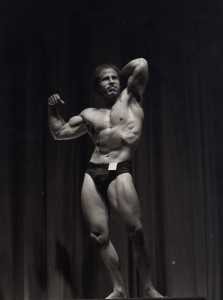 I was telling someone about how some people do not realize until they experience relaxing in the water, how wonderful and supported they are by the water when they relax enough to open their lungs deeply and breathe enough air to be lighted up and carried by the water. When we learn this “muscle memory” of relaxing and being supported, we relax and stop our struggle not just in the water but everywhere.
I was telling someone about how some people do not realize until they experience relaxing in the water, how wonderful and supported they are by the water when they relax enough to open their lungs deeply and breathe enough air to be lighted up and carried by the water. When we learn this “muscle memory” of relaxing and being supported, we relax and stop our struggle not just in the water but everywhere.
The important thing for most of us is not how we react in sports but how we react to all the little things in life.
Cerebrology is for those of us that want to be more ourselves and present and not examine our thoughts, just be real and have fun.
What we see (and how to improve it)
We look at the world and see how we feel. When we feel better everything looks better. When we feel safe we can fall in love.
The world is in love with us and reveals its beauty when we are able to feel our own beauty.
When we feel we are not safe and we are safe, we see without our light.
I want to go to a survivalist meeting and sell “I told you it was the end!” t shirts. I have an idea how much money is being made off of people because they have fear.
I see the cults take advantage of people with fear. They sell motivation and empowerment but then transform people to be comfortable dissociating so they can be even more submissive. Being comfortable being submissive does not make a person present, have clarity or become empowered.
Being relaxed in safe situations is the first step towards not feeling fear. Removing fear allows us to be present and have a feeling of well being that brings colors to our palate. The following exercises are easy to do and will give us what we need to be authentic, present and have the clarity we want.
Please do not do these exercises if you are not assertive enough to feel how important your needs are. If you are not sure if you neglect your own needs, please do the “Making it safe for my inner child.” exercise on this website before the feeling safe exercise. The exercise is about feeling safe in a safe environment and we must be able to create a safe environment for ourselves to do this.
Am I able to feel safe when I am safe?
Click on the above exercise.
———————————————————-
Rewriting what prepared me for something bad to happen in a safe situation.
Click on the above exercise.
 When you feel wonderful, you will see how wonderful the world is. Everything is illuminated from within.
When you feel wonderful, you will see how wonderful the world is. Everything is illuminated from within.




